Love the sizzling, savory magic of Japanese steakhouse veggies but want to skip the show and enjoy them at home? This hibachi vegetables recipe captures all the deliciousness—no flat top grill required. With vibrant veggies, a hint of garlic and butter, and that irresistible hibachi master sauce, these stir-fried vegetables are perfect for recreating your favorite Japanese meal at home.
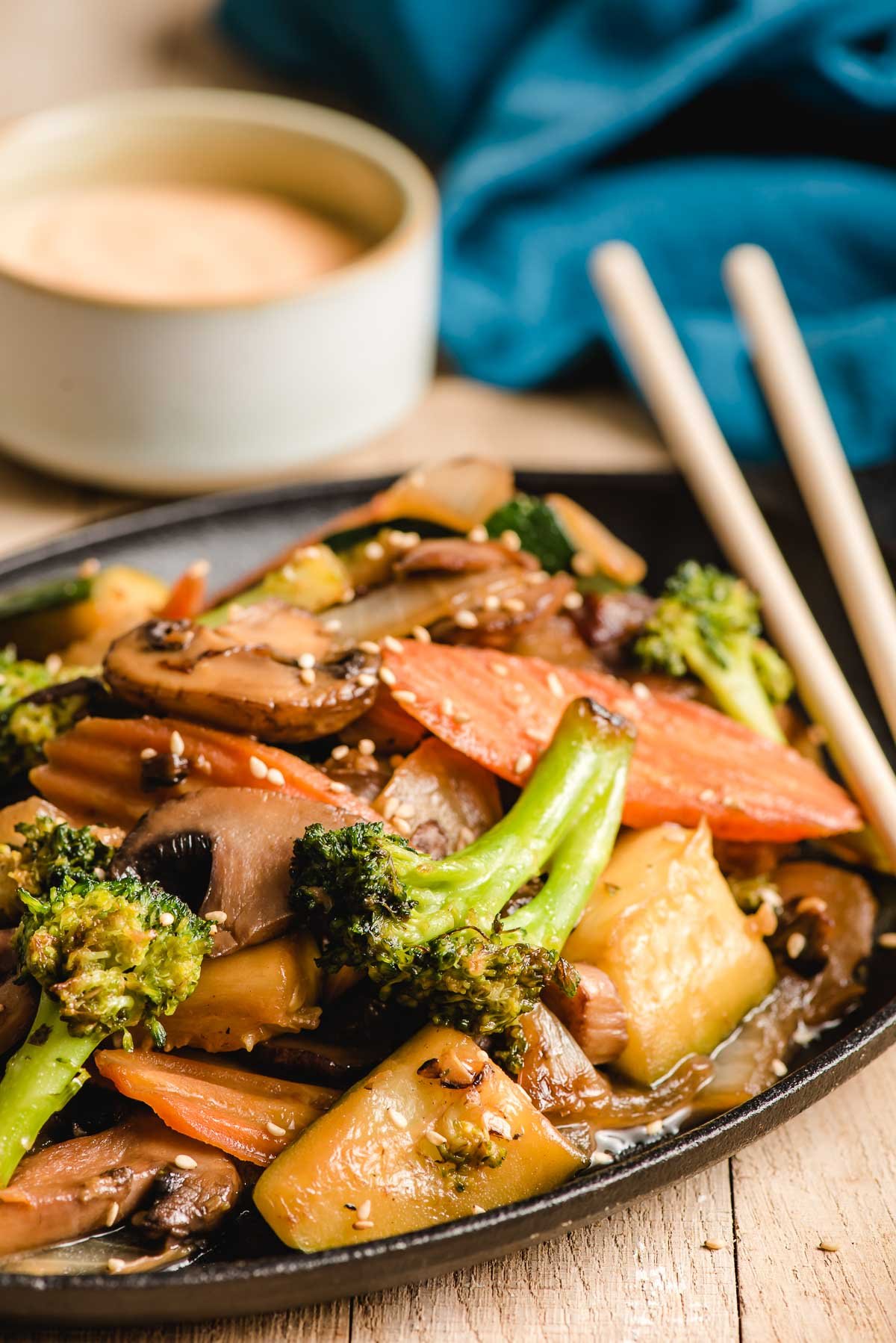
Table of Contents
Why You’ll Love This Easy Recipe
This hibachi vegetables recipe is a true game-changer for anyone who loves the bold, savory flavors of Japanese steakhouse cuisine. With just a handful of fresh vegetables, a few pantry staples, and 15 minutes, you can create a dish that’s as satisfying as it is simple.
The star of the show is the hibachi master sauce—a delightful blend of soy sauce, mirin, and honey—that infuses the veggies with a savory-sweet umami punch, perfectly capturing that authentic steakhouse taste. Plus, you don’t need any fancy tools or tricks to make this dish shine.
A hot skillet and a little patience are all it takes to get those beautifully browned edges and tender-crisp perfection. And if you’re feeling creative, you can easily customize the recipe with your favorite vegetables while still keeping its classic hibachi charm.
- Ready in just 15 minutes—perfect for weeknights.
- Authentic steakhouse flavor with a simple homemade sauce.
- No special tools are required—just a skillet and high heat.
- Easily customizable to suit your taste or the different vegetables you have on hand.
To round out these delicious veggies, try these hibachi recipes: Hibachi Steak and Hibachi Fried Rice, or make the protein of your choice: Surf and Turf, Beef Skewers with Teriyaki Sauce, or Asian Chicken are great options.
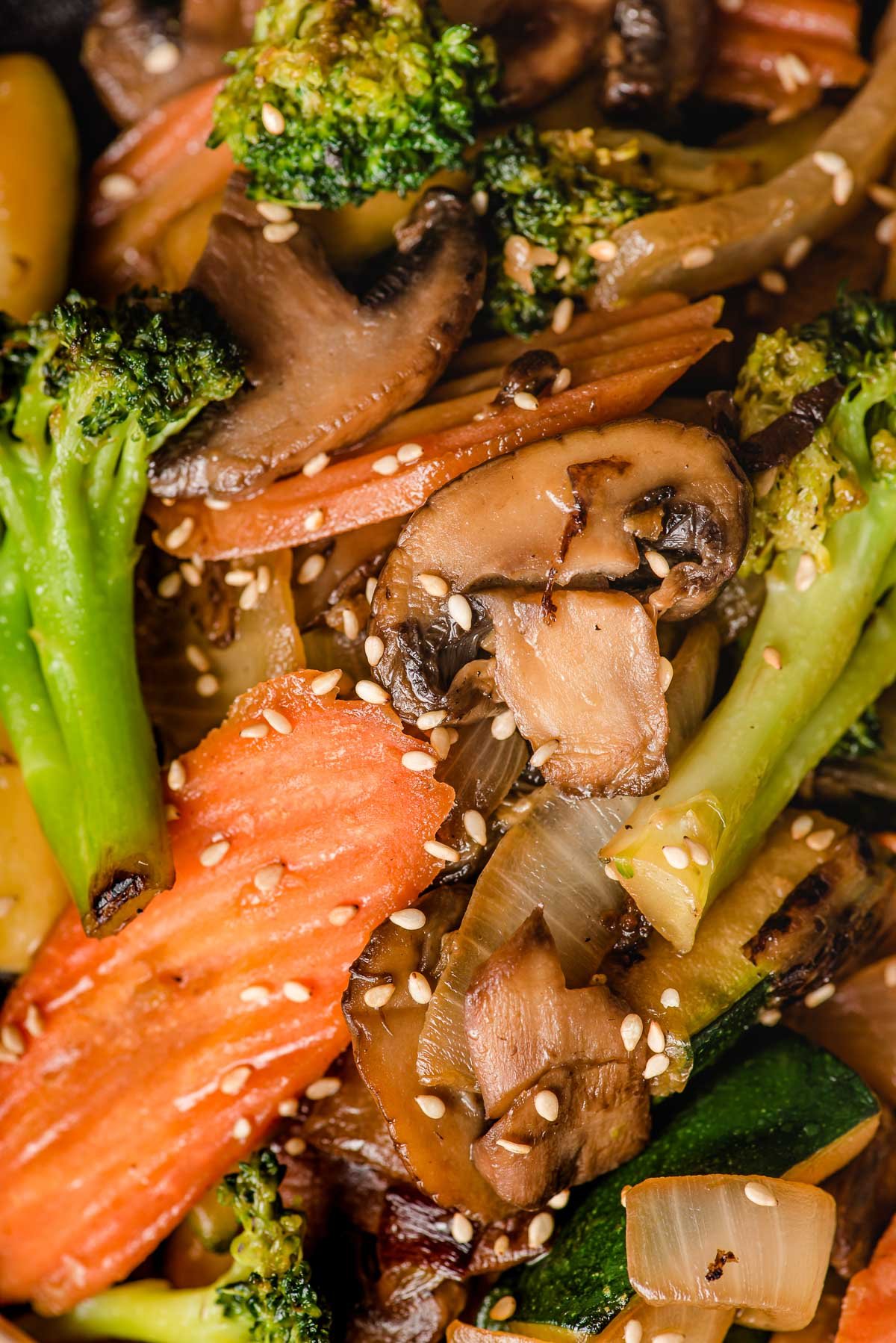
What is Hibachi?
Hibachi is a Japanese style of cooking that involves cooking food over a hot, open air charcoal or wood grill. The word hibachi means “fire grill.”
Japanese Steakhouses and Hibachi style food have become a hugely popular culinary genre in American restaurants, and it’s not hard to see why. These restaurants not only serve up several courses of soups, salads, meats, and veggies, but they put on a show while they do it!
There’s so much more to hibachi than just the quick-slinging fire-flinging showmanship of grill mastery. For more background on the history and character of Hibachi and Teppanyaki grilling, give this video from BiteMyBun a watch.
We have a particular fondness for Eastern Asian flavors, and we’re always curious to see how we can recreate our favorite restaurant dishes at home.
Some of our favorite past copycat recipes have been our Asian Chicken Marinade, this sweet and spicy Thai Basil Beef, our 30-Minute Beef Ramen Stir Fry, or these cool and colorful Salmon Sushi Bowls.
Ingredients You’ll Need
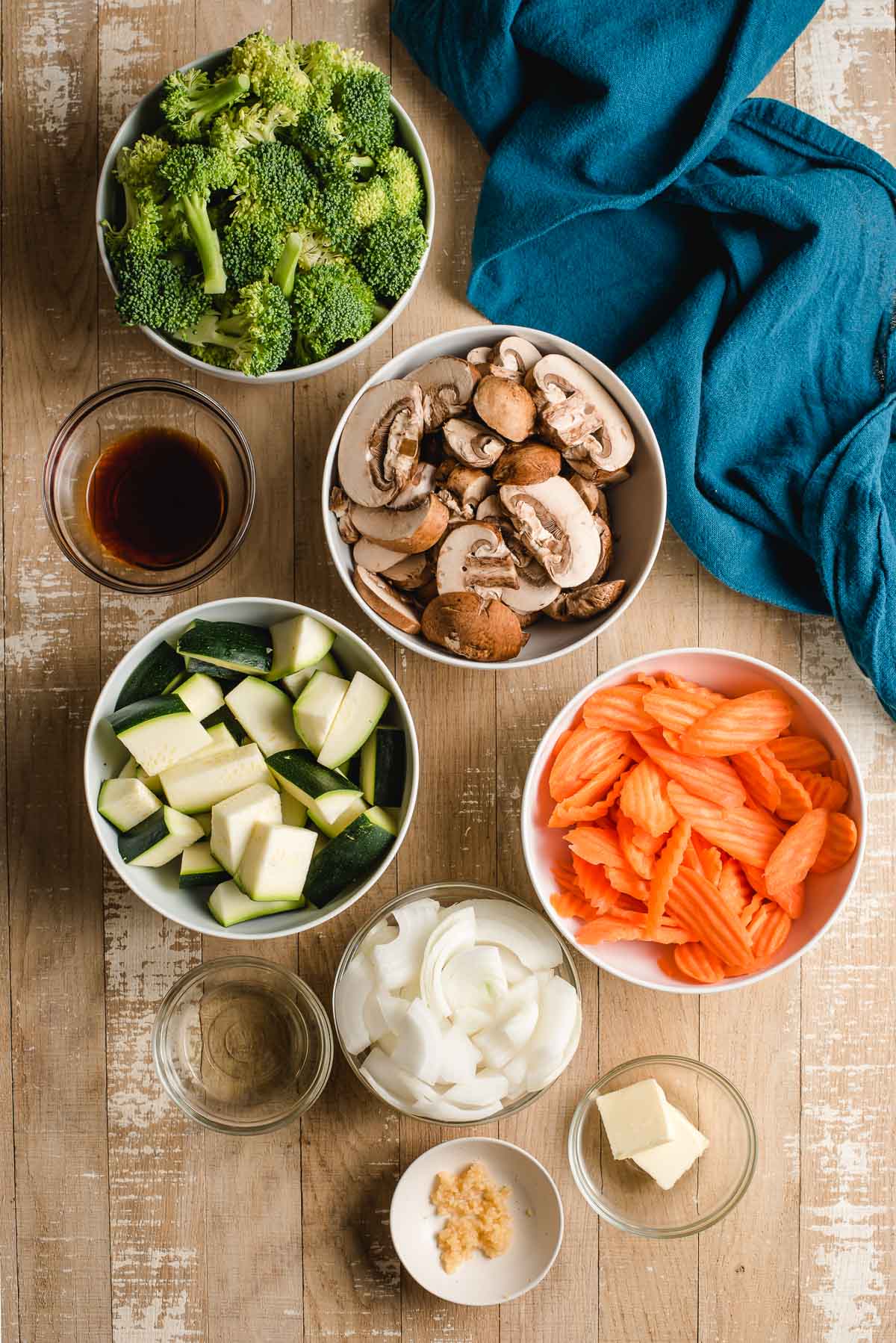
Vegetables
Most American hibachi restaurants use a combination of zucchini, onion, and mushrooms for their veggies. We like to add a few other vegetables for a true medley. Feel free to use the more traditional veggies, or substitute your own favorites.
- Broccoli: Cauliflower makes a great substitute.
- Carrots: Pre-cut carrot chips or baby carrots can also be used.
- Onion: Yellow, white, or even red onion will work here.
- Zucchini: Substitute with yellow squash for a slightly different flavor.
- Crimini Mushrooms: White button mushrooms or portobellos can replace them easily.
Seasonings & More
- Salt and Pepper: Use kosher salt and freshly ground black pepper for the best flavor, but any type will do in a pinch.
- Garlic: Fresh is best, but garlic powder can work as a substitute.
- Butter: Unsalted for better control of flavor; plant-based butter works for a vegan option.
- Neutral Cooking Oil: Vegetable oil, canola oil, or avocado oil all work well.
- Optional Garnishes: Sesame seeds for crunch and chopped green onion for freshness; cilantro can also add a bright twist.
Hibachi Master Sauce
- Soy Sauce: Opt for low-sodium if preferred.
- Mirin: If unavailable, substitute with a splash of rice vinegar and a pinch of sugar.
- Honey or Sugar: Either works to add a touch of sweetness.
See the full recipe card below for exact ingredient amounts and printable instructions.
How to Make Hibachi Vegetables

Step 1: Preheat your pan. Heat a large skillet (non-stick or cast iron) over medium-high heat and add a drizzle of neutral oil. Spread the vegetables in an even layer.
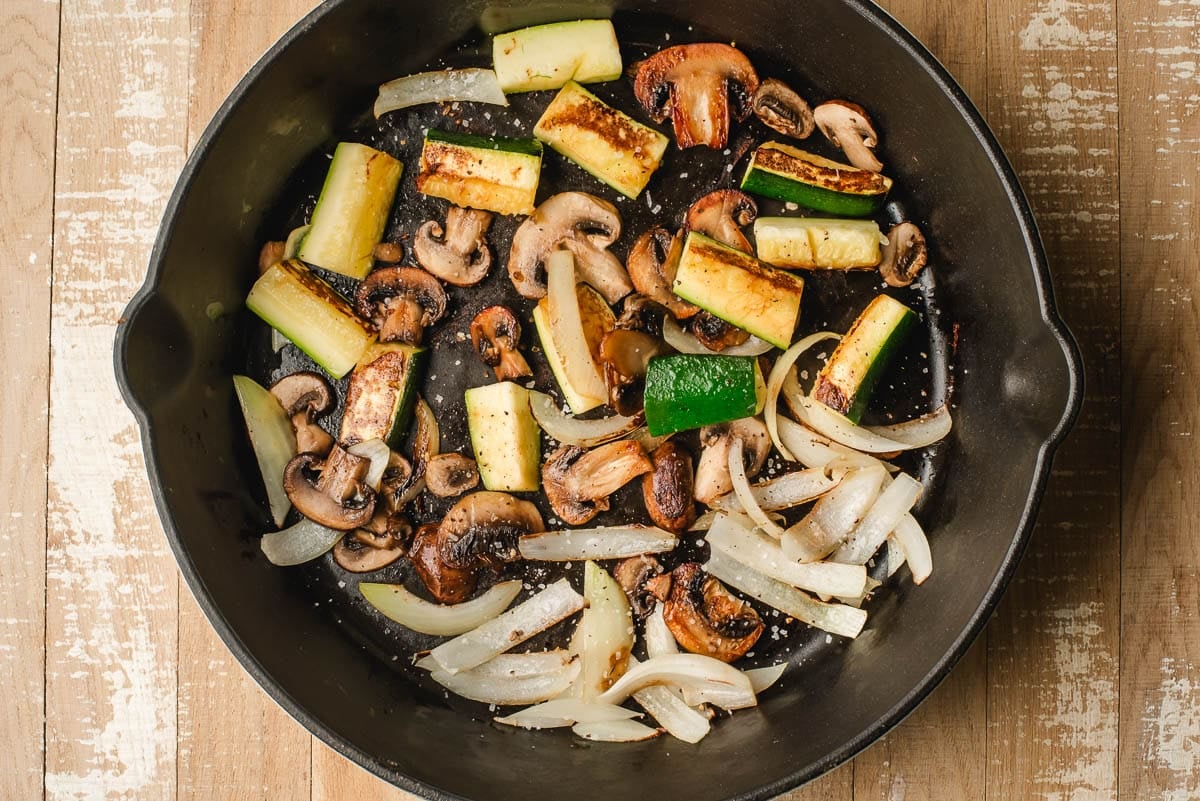
Step 2: Brown the veggies. Let them cook undisturbed for 1-2 minutes to develop that characteristic golden-brown sear. Sprinkle the veggies with salt and pepper, then toss and cook for another minute. Pro Tip: Avoid overcrowding the pan! Cook in batches if needed to ensure even browning.

Step 4: Add garlic and butter. Stir in the minced garlic and butter, cooking for another minute until fragrant.
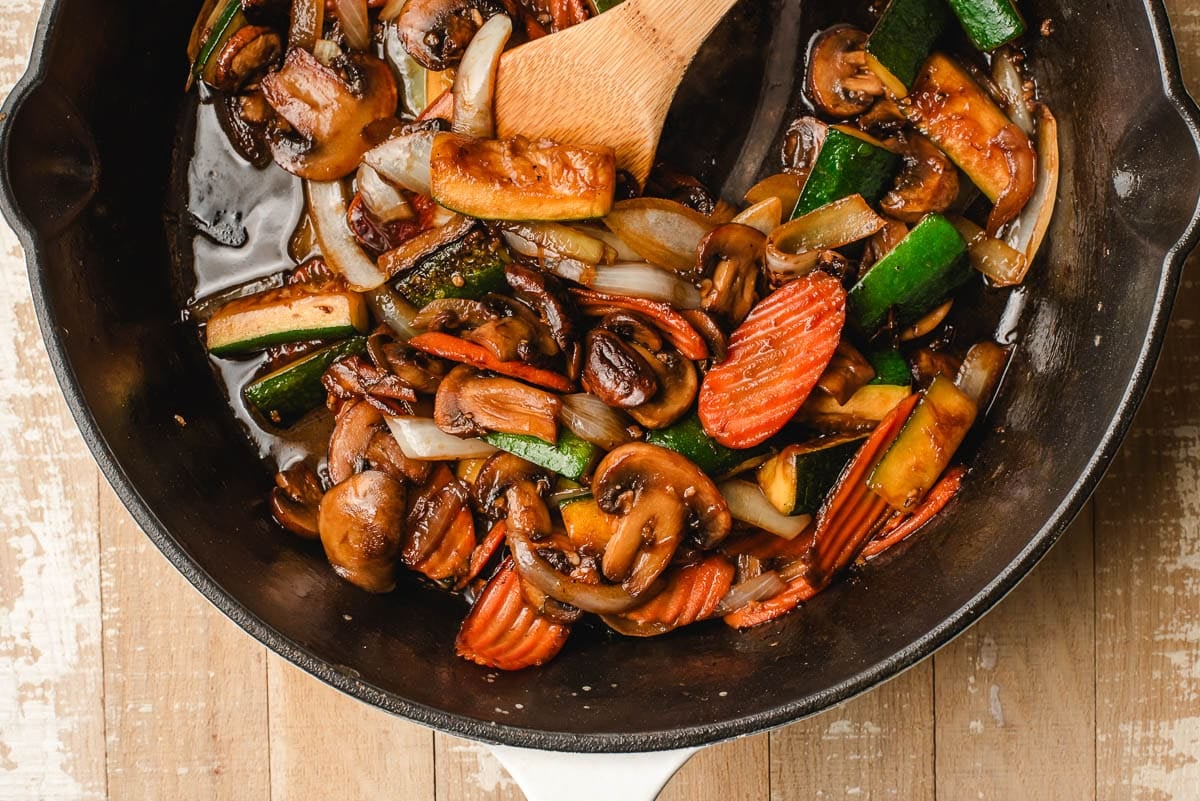
Step 5: Sauce it up. Pour in the hibachi master sauce and stir frequently until the veggies are crisp-tender, and the sauce is mostly absorbed (about 2-4 minutes).
Step 6 Garnish and serve: Sprinkle with sesame seeds and green onions if desired, and serve immediately.
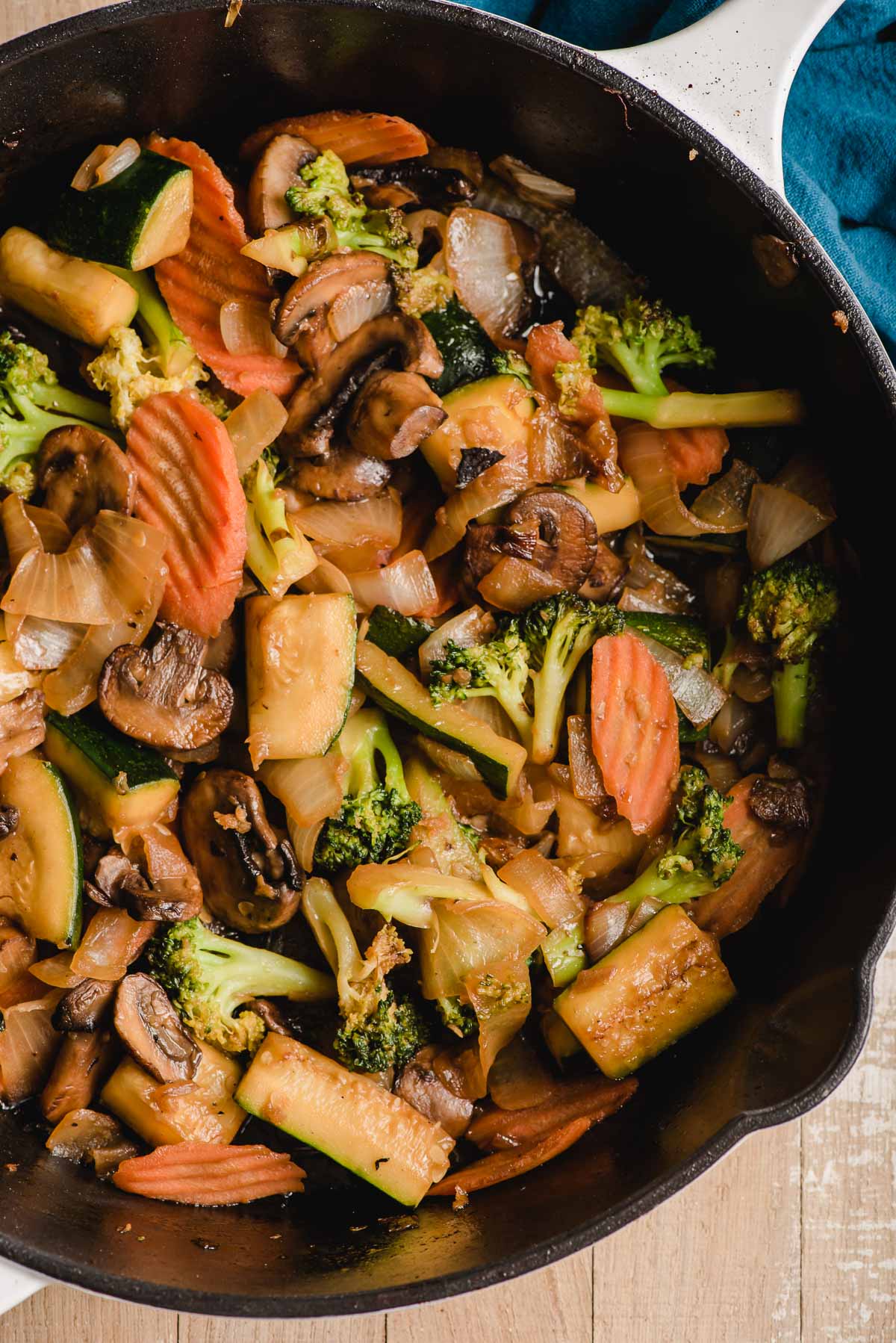
Serving Tips
- Start your hibachi meal with a hibachi ginger salad.
- Pair these veggies with hibachi fried rice, this hibachi steak recipe, or hibachi shrimp for the full experience.
- Don’t forget the yum yum sauce—perfect for dipping everything from veggies to proteins.
Expert Tips for Perfect Hibachi Veggies
- High Heat Is Key: The signature sear comes from cooking the veggies quickly over high heat. Preheating the pan is non-negotiable.
- Chunky Cuts Work Best: Keep the vegetables in larger pieces to avoid overcooking. You want them tender-crisp, not mushy.
- Use a Good Pan: A large cast iron skillet holds heat well and mimics the results of a flat-top grill.
- Prep Everything First: This is a fast-cooking recipe, so have all your ingredients chopped, measured, and ready to go before you start.
- Use What You Have: This is an opportunity to clean out your produce drawer. If you have something else on hand (fresh yellow squash, green beans, snow peas, bell peppers, etc, use them! Your favorite veggies are easily substituted here.
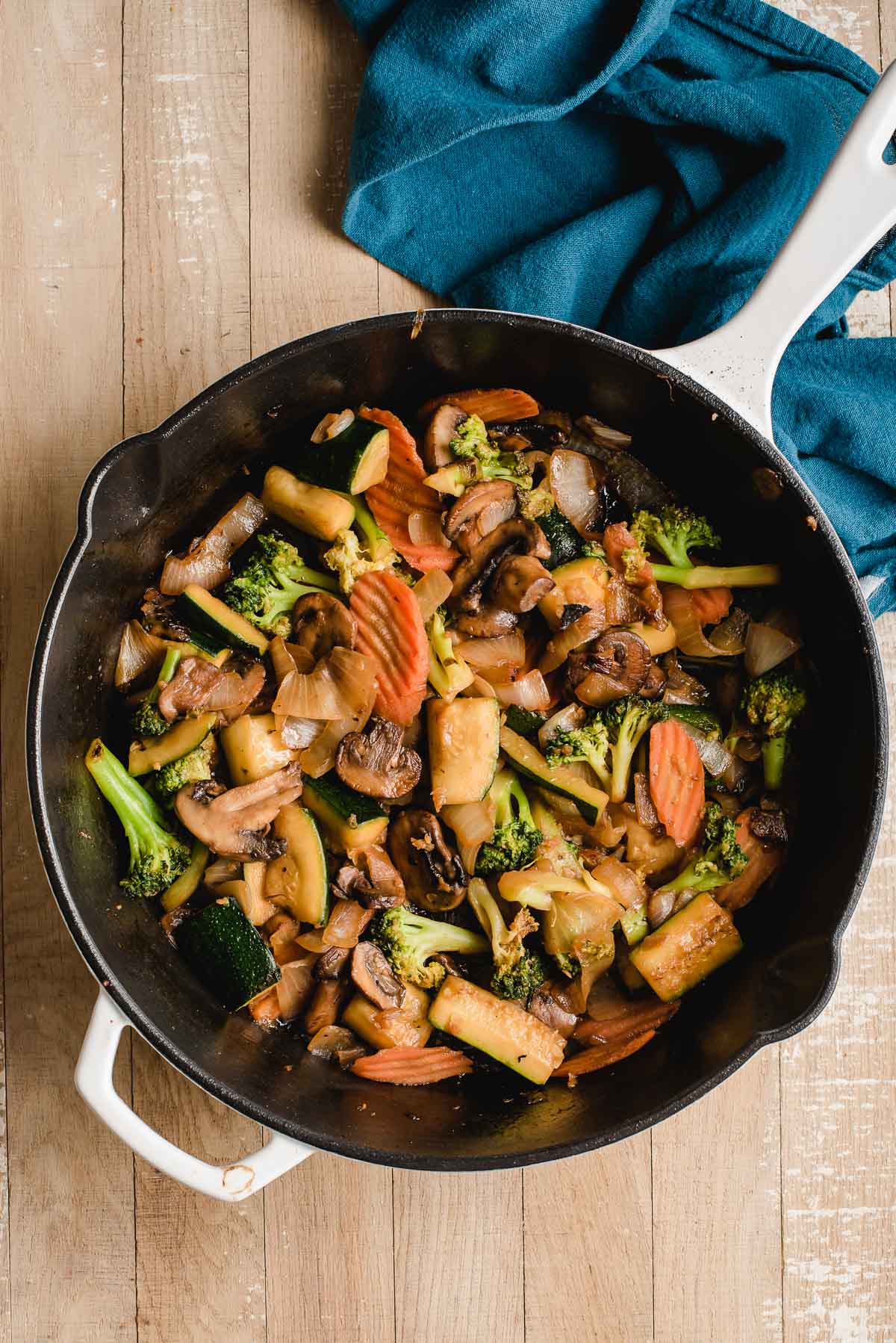
Storage Tips
- Store leftovers in an airtight container in the refrigerator for up to 3 days.
- Reheat in a skillet over medium heat for best results.
Recipe FAQs
Hibachi traditionally refers to cooking over an open flame, while teppanyaki involves grilling on a flat-top griddle. Most “hibachi” restaurants in the U.S. are technically teppanyaki-style.
Fresh vegetables are best for the right texture, but you can use frozen in a pinch. Just thaw and pat them dry before cooking.tyrf4deg
Hibachi chefs typically use a neutral oil like vegetable or canola, sometimes mixed with sesame oil for flavor.
Absolutely! Swap the butter for plant-based butter or omit it altogether, and ensure your sauce ingredients are vegan-friendly.

More Asian-Inspired Favorites
- Quick Korean Pickles: A tangy, crunchy appetizer that pairs perfectly with grilled dishes.
- Ground Beef Bulgogi: A quick, 30-minute dinner that’s loaded with flavor.
- Creamy Thai Coconut Chicken Soup: A comforting bowl with a hint of spice.
- Chinese Donuts: Sweet, fluffy, and perfect for dessert.
Recreating your favorite Japanese steakhouse in the comfort of your own home has never been easier. These hibachi vegetables bring all the smoky, buttery, and umami-packed goodness straight to your kitchen. Pair them with your favorite Asian-inspired dishes, or let them shine as the star of a weeknight meal.
Whether it’s the nostalgic aroma of sizzling garlic or the satisfying crunch of perfectly cooked veggies, this dish proves you don’t need a hibachi grill to enjoy hibachi magic!
Want more easy recipes? Follow us on Instagram to keep the warm, delicious inspiration coming! We also love feedback, so if you make this recipe, leave a star rating and comment below!
Join Our Community
Sign up for the NeighborFood email community to get recipes in your inbox ad free and access exclusive content from us! You can also follow us on Instagram and Pinterest. Made our recipe? Leave us a star rating or comment below!

Hibachi Vegetables
Ingredients
- Neutral cooking oil (to coat)
- 1 large broccoli crown (chopped into florets)
- 1 cup carrot slices
- 1 yellow onion (sliced)
- 1 medium zucchini (chopped in 2 inch chunks)
- 8 ounces crimini mushrooms (sliced)
- Kosher salt and pepper
- 2 teaspoons minced garlic
- 1 ½ Tablespoons unsalted butter
- 3 Tablespoons hibachi master sauce (*see notes)
Instructions
- Heat a large cast iron skillet or wok over high heat. Add enough oil to coat the pan, waiting until it shimmers.
- Add half the veggies to the pan and saute, undisturbed, for 1-2 minutes or until browned on the bottom. Sprinkle with salt and pepper. Toss, and cook another minute or so, until the edges have browned.. Remove to a plate, then repeat with the remaining veggies.
- Add all the veggies back to the pan, and add the garlic and butter, allowing it to cook until fragrant, about 1 minute.
- Add the sauce and cook, stirring frequently, until the vegetables have soaked up the sauce and are crisp tender, another 2-4 minutes. Remove from heat and sprinkle with sesame seeds if desired.
Notes
- Tips: Avoid mushy vegetables by searing over high heat in batches so as not to crowd the pan.
- Soy sauce- 3/4 cup
- Mirin- 2 Tablespoons
- Honey or sugar- 2 Tablespoons
Nutrition
Did you make this recipe?
Leave a review, Mention @NeighborFoodie, or tag #neighborfoodies!
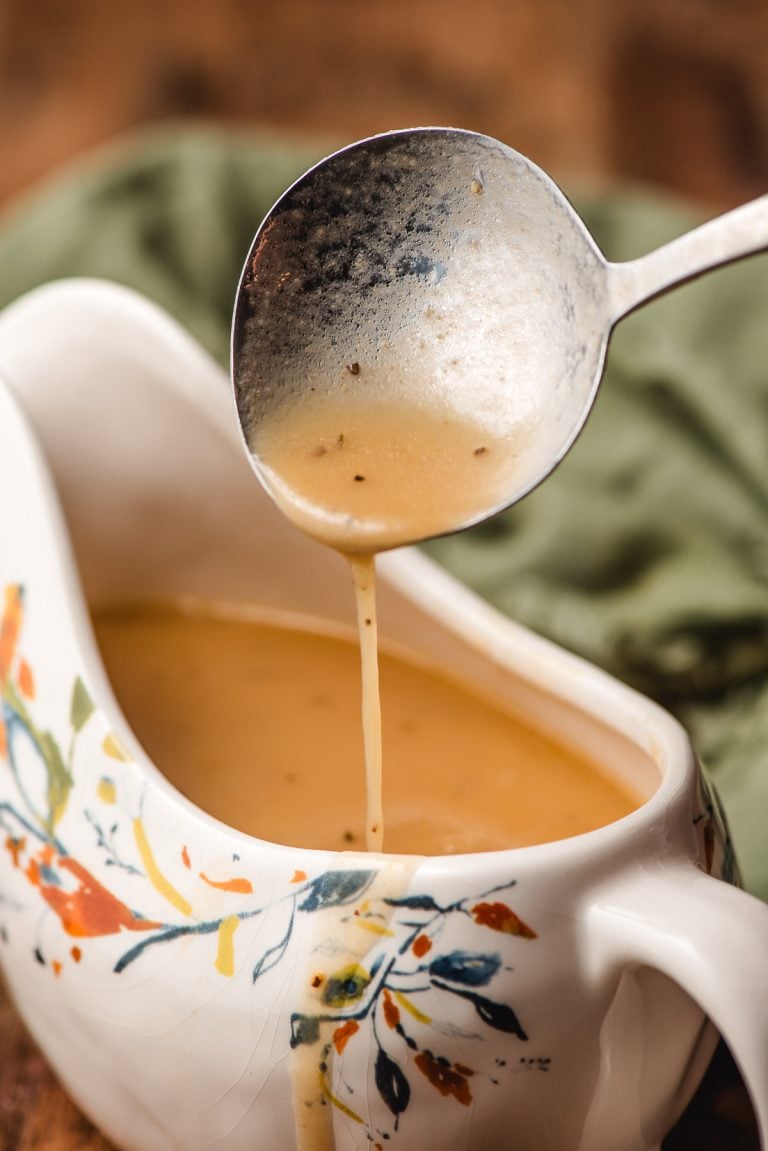



Leave a Reply